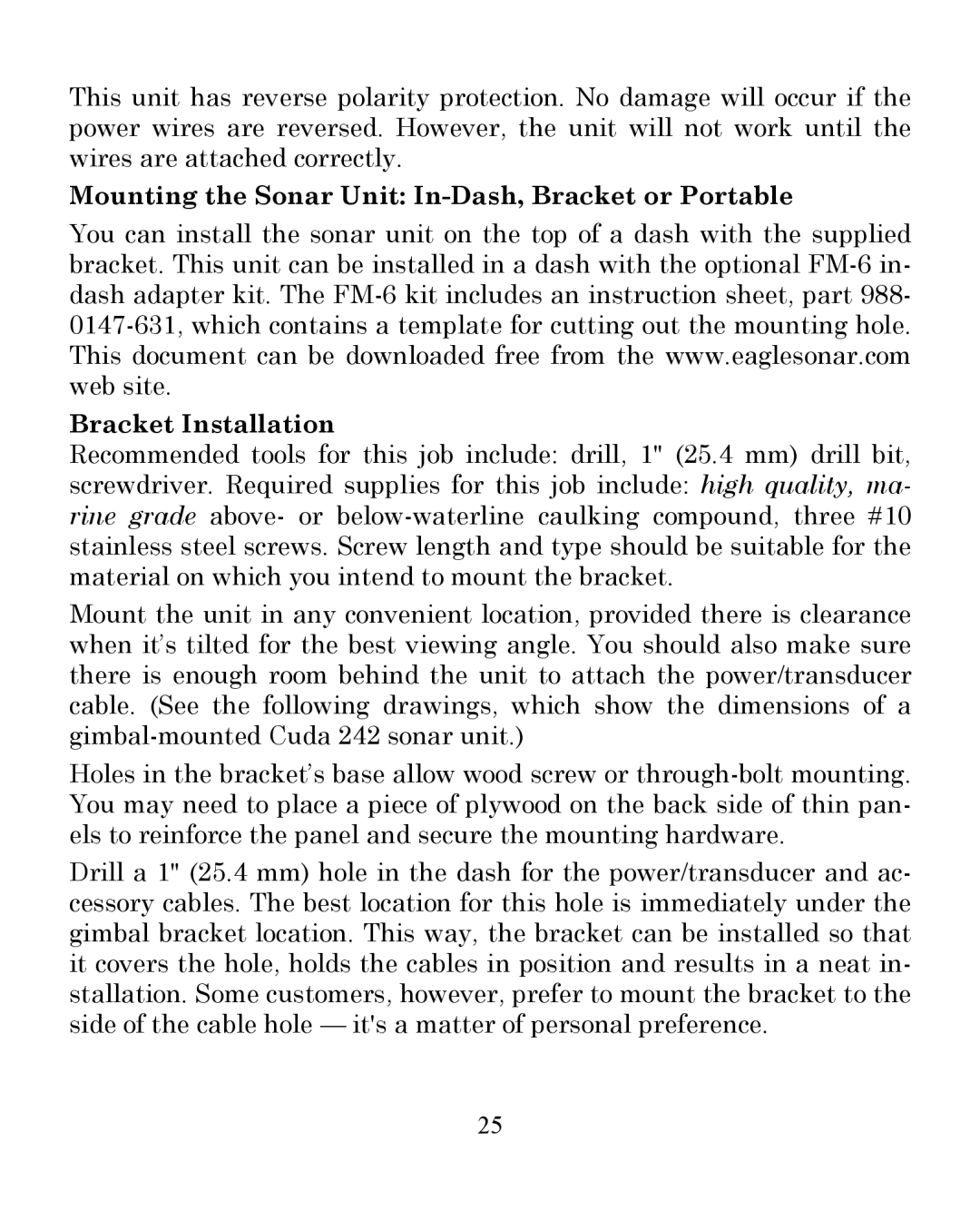This unit has reverse polarity protection. No damage will occur if the power wires are reversed. However, the unit will not work until the wires are attached correctly.
Mounting the Sonar Unit:
You can install the sonar unit on the top of a dash with the supplied bracket. This unit can be installed in a dash with the optional
Bracket Installation
Recommended tools for this job include: drill, 1" (25.4 mm) drill bit,
screwdriver. Required supplies for this job include: high quality, ma- rine grade above- or
Mount the unit in any convenient location, provided there is clearance when it’s tilted for the best viewing angle. You should also make sure there is enough room behind the unit to attach the power/transducer cable. (See the following drawings, which show the dimensions of a
Holes in the bracket’s base allow wood screw or
Drill a 1" (25.4 mm) hole in the dash for the power/transducer and ac- cessory cables. The best location for this hole is immediately under the gimbal bracket location. This way, the bracket can be installed so that it covers the hole, holds the cables in position and results in a neat in- stallation. Some customers, however, prefer to mount the bracket to the side of the cable hole — it's a matter of personal preference.
25
